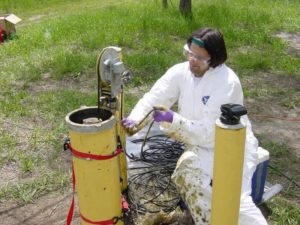
A monitoring approach that relates remedy performance to site-specific SMART functional objectives is a critical element of an integrated strategy. The monitoring approach must include a spatially and temporally sufficient and reliable data set of the remedy performance. An appropriate monitoring program should be dynamic and adjusted to accommodate new data and changing conditions as remediation progresses. Monitoring programs should be routinely reviewed and adjusted to ensure that data being collected continue to be useful. The monitoring program should be designed to assist in making decisions about transitioning between technologies or implementing contingency actions. Three types of monitoring are needed:
- Compliance monitoring used throughout the remediation lifetime to document the nature and extent of impacts and to ensure that potential exposure pathways are controlled;
- Process monitoring to assess whether the system is functioning as intended
- Performance monitoring to assess effectiveness of the remedial approach in meeting SMART functional objectives.
Typically, multiple lines of evidence are monitored to evaluate remediation performance. An effective performance monitoring approach enables decision makers to assess the value of the existing remediation program, identify required alterations of the existing remedial approach, and evaluate the progress toward meeting the functional objectives. The metrics most useful for this type of monitoring may not be typical monitoring data. For example, mass discharge and flux data may be more valuable for deciding when to convert from one technology to another than would concentration data alone. Similarly, relatively high-resolution monitoring data collected along transects may be valuable in determining where to target treatments and in measuring performance. Transect-based data can also form a robust basis for measuring contaminant flux.
In developing a monitoring program, modeling is often helpful. Models can be valuable tools for assessing monitoring data, and useful models have been developed to assist managers of chlorinated-solvent sites. This guidance summarizes the features of several of the most widely used analytical and numerical models and describes their advantages and limitations. Regardless of the type of model, sensitivity analyses should be used to assess the potential impact of parameter values on simulation results and to develop a range of possible outcomes.